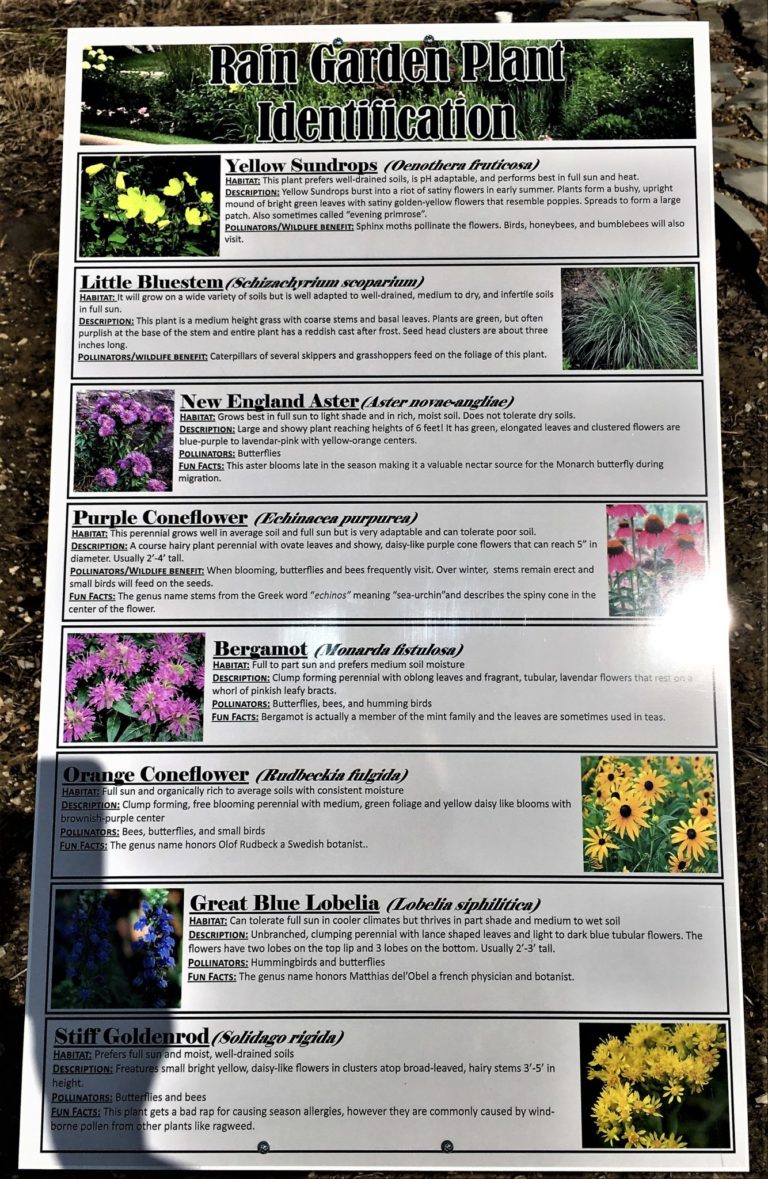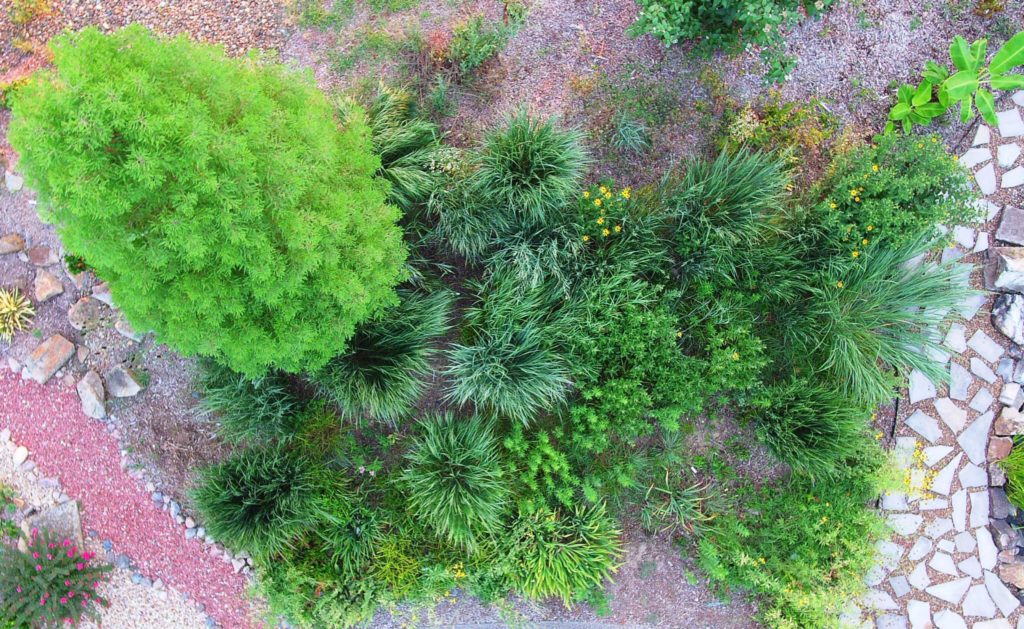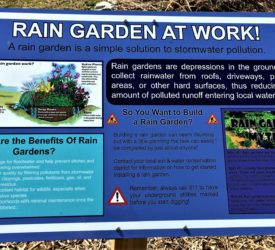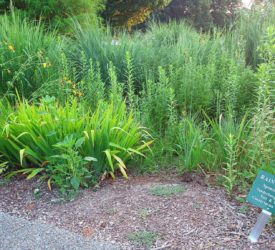 Rain Garden
Rain GardenJust what is a Rain Garden? It is a landscaped area planted with wild flowers or native vegetation that soaks up rain water and slowly filters the water into the ground rather than allowing it to run off to a storm drain.
Why are Rain Gardens important? They can help reduce flooding, increase the amount of water filtering into the ground to help recharge aquifers, protect streams and lakes from pollutants carried by urban storm water runoff, enhance the beauty of yards and neighborhoods, and provide a habitat for birds, butterflies, and beneficial insects.
What’s the difference between a Rain Garden and a pond? Rain Gardens are not ponds. They allow rain water to soak slowly into the ground where a pond will retain water. They are not a breeding ground for mosquitoes. Water collected in a Rain Garden soaks back into the ground in 24 hours, and it takes 7-10 days for mosquitoes to hatch and lay eggs. Rain Gardens attract dragon flies which eat mosquitoes!
Is a Rain Garden hard to take care of? A Rain Garden, like any garden, requires attention to keep your plants from getting out of control and to destroy weeds. At first you will need to deal with any grass or weeds that you didn’t eliminate while preparing the garden and any seeds that are brought to the surface by working the soil. Mulch will help minimize weed seed germination. Also, early in the life of your garden you may need to water young plants to help them get established. Later, seeds may be brought in with water entering the garden and from plants in your garden, not to mention the wind. If you don’t want your plants to fill in empty spaces by setting seed you can deadhead after they bloom. This will encourage new blossoms but has the downside that it also will eliminate seed that may serve as food for birds.
Where should I locate my Rain Garden? A Rain Garden can be located near the house to catch runoff from the roof, or further out in the lawn to collect runoff from the roof and the lawn. It should be located at least 10 feet from the house. It should not be over a septic system or sewer lateral, under a large tree, or in a high foot traffic area.
How big and deep should the Rain Garden be? This depends on how much run off will drain into the area, how deep it needs to be, and the type of soil it is planted in. A Rain Garden usually ranges between 100 to 300 square feet. Typically, the depth is between 4” and 8.” This will insure the water will not pond, lessen the likelihood of someone tripping in the area, and will provide the appropriate amount of surface area for the water to drain.
How does the soil type affect a Rain Garden? When wet, clay soil will feel sticky, and clump. Silty soil feels smooth but not sticky when wet. Sandy soil feels gritty and coarse when wet. Clay soil drains more slowly than sandy or silty soil. A rain garden built in clay soil needs to be larger than one built in sandy or silty soil. The extra surface area will compensate for the slower water absorption rate.
What do I plant in a Rain Garden? Native plants adapt well to the extremes of wet and dry that can be experienced in a Rain Garden. The amount of sun the area receives should also be considered. Some good choices for a sunny rain garden are New England aster, coreopsis, liatris, monarda, goldenrod, spiderwort, coneflower, blue flag iris, red milkweed, and a variety of grasses and sedges. A shady rain garden plant mix could include wild columbine, wild geranium, woodland phlox, bluebells, cardinal flower, Jacob’s ladder, and spotted Joe Pye weed.



